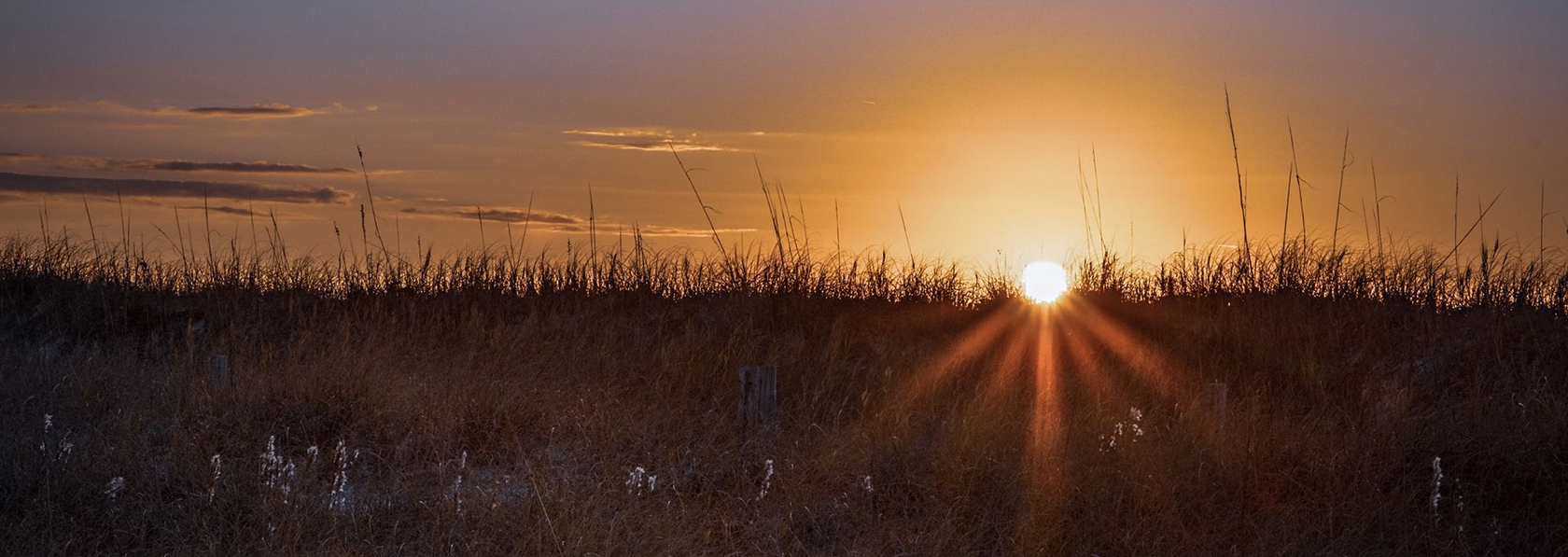Sea Turtle Protection Program

Sea Turtle Protection Program
At the Bald Head Island Conservancy, our Sea Turtle Protection Program utilizes saturation tagging to intercept and identify every nesting turtle that comes onto our beaches. Our team conducts nightly patrols from 9PM to 6AM and deploys a range of techniques when encountering a turtle, including applying a passive integrated transponder (PIT), attaching a flipper tag, collecting a DNA sample, and taking both straight and curved carapace measurements. All the data we gather is recorded in our historical database, which spans over 40 years and provides a wealth of information on individual sea turtles that have visited Bald Head Island.
This rigorous tagging program allows us to gather valuable insights into the health and behavior of these endangered species. By closely monitoring sea turtle populations, our scientists can better understand how these creatures are responding to environmental changes and adapt conservation efforts accordingly. Join us in our mission to protect and preserve these magnificent creatures and their habitats.
Efforts to protect sea turtles on Bald Head Island date back to 1980. Since its founding in 1983, the BHI Conservancy has coordinated and sponsored the Sea Turtle Protection Program, in cooperation with the North Carolina Wildlife Resources Commission and the National Marine Fisheries Service. Bald Head Island has been designated as an “index beach” by NMFS, making our sea turtle nesting activity and Protection Program nationally recognized.
After the nesting female returns to the ocean, our interns protect the nest from predation by burying a protective mesh cage around the nest - preventing raccoons, foxes, and dogs from entering the nest, while allowing the hatchlings to later emerge unimpeded. Before the use of mesh cages became standard practice on Bald Head, predation resulted in a high nest mortality.
Three days after a nest hatches, the Sea Turtle Protection Team and volunteer nest monitors excavate the nest. This serves two purposes: to take an inventory of the nest, and to release any “stragglers” that may still be in the egg chamber. An inventory is taken so that we can determine success rates of the mothers. We do this by counting the number of empty eggshells found and comparing it to the number of unhatched eggs. Sometimes, there are still live hatchlings in the nest, which we will release on the beach so they can make it to the ocean.
On our beaches, we typically see loggerhead sea turtles (Caretta caretta), and occasionally green sea turtles (Chelonia mydas). We have had a total of 37 green sea turtle nests, the first being in 1992. We’ve also been fortunate enough to document one leatherback nest in 2010 and one Kemp’s Ridley nest in 2020.
All seven species of sea turtles worldwide are either critically threatened or endangered, which is what makes protecting nesting mothers and hatchlings so important!
Three days after a nest hatches, Conservancy staff will excavate the nest to take an inventory of the eggs and release any hatchlings that are still inside.
- Shop at Turtle Central for a red flashlight or red turtle sticker for your phone or handheld device. Turtles are disoriented by white light, but can’t see red light!
- Fill in holes on the beach and pack up your beach equipment. Turtles can easily fall into holes or run into your beach gear if left overnight!
- Always remember your reusable shopping bags to help reduce the use of plastic.
- Join the Sea Turtle Protection Program Team
- College Students or Recent Grads: Apply to become a Sea Turtle Intern! Visit our Job Openings page for available internship opportunities
- Families: Adopt-a-Nest! Visit our Adopt-A-Program page for more information. Become a Nest Monitor! Email us at volunteer@bhic.org for more information
Annual Statistics & Reports
2023 Sea Turtle Protection Program
The 2023 sea turtle nesting season on Bald Head Island (BHI) was highlighted by the deployment of four satellite tags on nesting turtles and surpassing the 100-nest mark for the fourth time in the last five seasons. The Bald Head Island Conservancy’s (BHIC) Sea Turtle Protection Team (STPT) patrolled the beaches of BHI for 168 days/nights (35 dawn, 60 partial nights, and 72 full nights), observing 122 nests, of which 46 (37.7%) were relocated, and 220 false crawls. The first nesting activity occurred on 15 May and the last on 18 August. For the first time since 2013, the STPT recorded 3 green sea turtle (Chelonia mydas) activities that included one nest and two false crawls. At least 63 genetically distinct females were responsible for the 342 nesting activities observed. The STPT also observed the return of 9 Legacy turtles (Billie, Fluffy, Gigi, Granny, Mary Jane, Sandy, Scarlett, Thomasina, & Turquoise) and named 2 new Legacy turtles (Lee Ann & Strawberry). The first hatching event was observed on 30 July, while the last nest was excavated on 25 October. The average incubation time for the 122 nests was 55.2 days. Approximately 13,588 eggs were laid on BHI, with an estimated 10,104 hatchlings making it to the water. Mean hatch success was 79.9%, while mean emerge success was 70.2%. Our most productive mom was a vagabond remigrant, FFK802, who laid 657 eggs that produced 530 hatchlings. Our most efficient mom was Billie, with a hatch success of 96.4% and an emergence success of 94.1%. With a highly active Atlantic hurricane season, BHI was fortunate to have lost only one nest to Hurricane Idalia. However, a total of 30 nests were impacted by a combination of hurricanes, tropical storms, and king tides. Additionally, one nest fell victim to coyotes, and a total of 10 nests were affected by a mixture of island predators, accounting for the loss of 442 eggs (3.2%).
The STPT embarked on two projects this season. First, we deployed four satellite tags, outfitting KKD855, KKX238, Sandy, and Scarlett, to better understand post-nesting migration. This project aims to enhance our understanding of their movements across different habitats, including proposed wind farm properties. Second, in collaboration with UNCW post-doctoral researcher Dr. Matt Ware, we are investigating the impact of environmental parameters on nesting habitat suitability and distributions.
This research reflects the Conservancy’s commitment to comprehensive conservation efforts. All sea turtle monitoring and research were performed pursuant to North Carolina Wildlife Resources Commission Endangered Species Permit #23ST14.
Sea Turtle Nests per Beach
South Beach – 71
East Beach – 43
West Beach – 8
2022 Sea Turtle Protection Program
Sea Turtle Nests per Beach
Sea Turtle Nests per Month
2021 Sea Turtle Protection Program
Turtle Nests per Beach
Turtle Nests per Month
Location: P.O. Box 3109, 700 Federal Rd. Bald Head Island, North Carolina 28461 EIN#: 58-1574496
Phone: Office: (910)-457-0089
Email: info@bhic.org
Hours:
- Monday9AM - 5PM
- Tuesday9AM - 5PM
- Wednesday9AM - 5PM
- Thursday9AM - 5PM
- Friday9AM - 5PM
- Saturday9AM - 5PM
- Sunday9AM - 5PM

